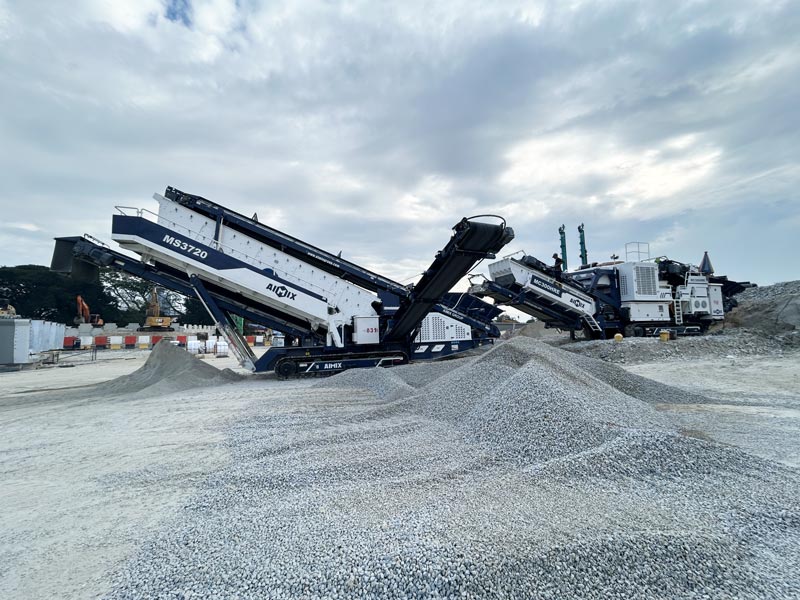How to Choose the Right Stone Crusher Based on Output and Site Conditions
Selecting the right stone crusher plant is essential for any operation in the mining and aggregate industry. Whether you're crushing hard granite, limestone, or recycled materials, the success of your project depends on matching the machine's capabilities with your production goals and on-site conditions. A misaligned choice can lead to high operational costs, inefficiency, or production delays. In this guide, we'll explore how to make the right selection based on output requirements, mobility needs, and working conditions such as terrain or available space.
Understanding Your Output Requirements
Before evaluating crusher models or mobility options, it's important to define your output goals. How many tons per hour (TPH) do you need? What is the target size of the final product? These factors will determine the capacity, type, and size of crusher you require.
Match Capacity with Application Scale
For large-scale mining or quarrying operations, a high-capacity stationary stone crusher plant(planta trituradora) is usually the most economical solution. These systems are designed to handle bulk material continuously and are ideal when production needs exceed 300 TPH.
On the other hand, smaller operations or projects with lower volume requirements—such as municipal construction or short-term road work—might benefit more from a mobile stone crusher plant, which offers both mobility and decent output in the range of 50–200 TPH.
Consider Output Quality
The type of crusher (jaw, cone, impact, or vertical shaft) also plays a role in the quality and shape of the end product. For example, if you're producing aggregates for asphalt or concrete, you'll want a setup that ensures consistent gradation and minimal fines.

Evaluating Site Conditions
Different job sites require different solutions. Terrain, space constraints, and access to infrastructure all play a major role in plant selection.
Fixed Sites with Infrastructure
If your site has permanent infrastructure—such as power supply, storage space, and haul roads—a stationary stone crusher plant makes sense. It offers long-term stability and easier integration with auxiliary systems like screening, washing, or stockpiling units.
Remote or Confined Locations
In contrast, remote mining areas or urban demolition sites require compact and mobile solutions. A track type stone crusher(trituradora de piedra de oruga) can be a game-changer in such environments. These units are built on tracked chassis and can move easily on rough terrain without needing additional transport equipment.
Track type stone crusher systems are especially useful when working in uneven, mountainous, or muddy terrain. They're self-propelled, quick to deploy, and efficient even in off-road conditions where traditional wheeled units might struggle.
Mobility vs Performance Trade-Offs
When choosing between a stationary and mobile stone crusher plant(venta planta chancadora movil), there are trade-offs to consider.
Advantages of Mobile Solutions
-
Fast Setup: Ideal for short-term jobs or multiple project sites.
-
Flexibility: Easily relocated, reducing the need for long material hauls.
-
Lower Initial Site Investment: No need to build foundations or access roads in advance.
Advantages of Stationary Plants
-
Higher Throughput: Better suited for continuous, high-volume production.
-
Durability: Fewer moving components, meaning less wear and tear.
-
Easier Integration: Can be part of a larger crushing and screening system.
If you're running a mobile crushing business or operating in constantly changing job locations, a mobile stone crusher plant may be the most practical and profitable choice.
Cost Considerations and Long-Term Strategy
While mobile units offer convenience, they generally have a higher upfront cost per ton of production due to transport and fuel needs. Meanwhile, a stationary stone crusher plant has a lower operational cost per ton but requires more initial site preparation.
Maintenance and Wear
-
Track-mounted machines may require more frequent maintenance due to the stress of constant movement and exposure to rough terrain.
-
Stationary crushers typically enjoy longer component life and reduced wear, especially in stable working environments.
Project Duration
For projects longer than 12 months or with consistent aggregate needs, investing in a fixed solution is often more economical. For seasonal or remote work, mobile and track type stone crusher models offer faster ROI despite a potentially higher cost-per-hour.
Final Thoughts
Choosing the right stone crushing equipment isn't just about price or output—it's about aligning the machine's strengths with your real-world conditions. If your project demands high mobility and adaptability, a mobile stone crusher plant or track type stone crusher is likely your best bet. For long-term, high-output sites with solid infrastructure, a stationary stone crusher plant remains the most cost-effective solution.
Evaluate your production needs, terrain, and project duration carefully—and you'll be equipped to make the right choice for your crushing operations.
